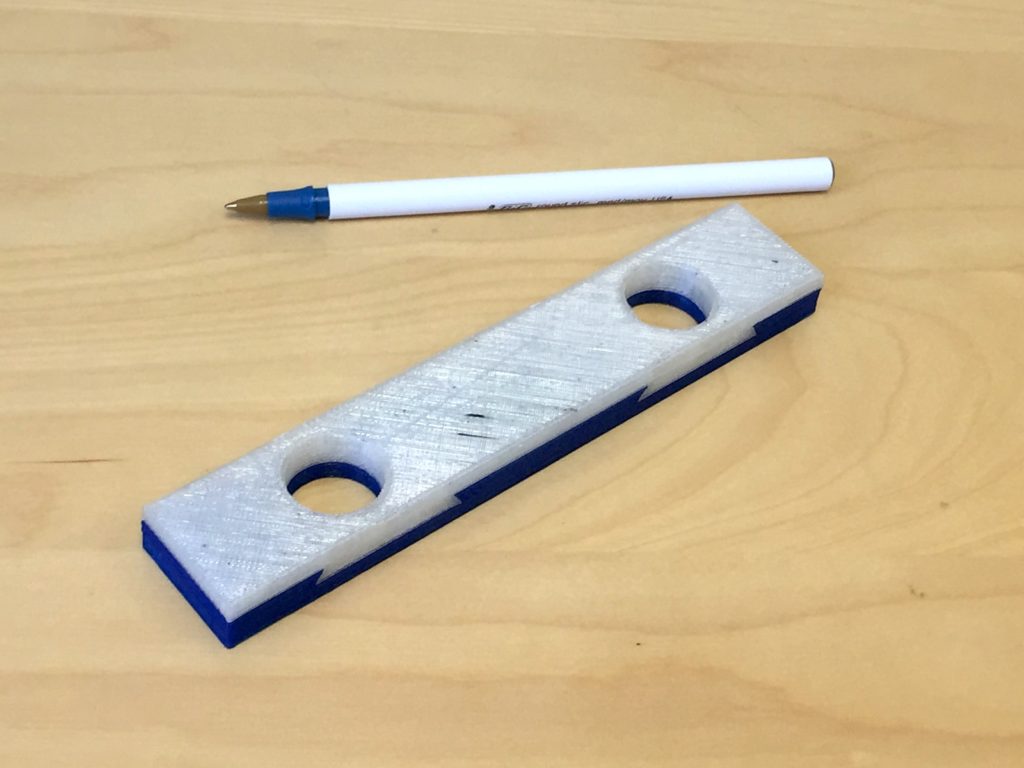The summer was way too busy but I nonetheless was able to design and prototype my first mechanical puzzle. It even works!
Building a working prototype turned out to be much easier than I expected now that 3D printing has become so affordable and so widespread. All I had to do was create .STL files (I used OpenSCAD) and take them to a local outfit called Einstein’s Workshop whose fantastically helpful staff (thank you Katy and Matt!) printed them for me.
I tried prototyping a puzzle about twenty years ago by taking my design to a machine shop and that cost me a couple of hundred dollars. The 3D printed prototype, on the other hand, was about a twentieth the cost and took a quarter the time, thanks to the amazing march of technology. Also, even though I made a mistake in the first version of my design it only cost me the wasted 3D print, not the cost of a machine shop’s time and materials.
So here is a picture (the pen is there for scale):
As you can see, the surface finish is pretty rough since it was made using FDM (Fused Deposition Modeling). I’m currently waiting to get back a higher tolerance version that was made using SLS (Selective Laser Sintering) and hopefully that will compare favorably with the smooth finish of machined aluminum. My plan is to iterate my design with 3D printed prototypes until the puzzle is working perfectly; then I will decide whether it’s worth the extra cost of having them machined from aluminum or delrin or something.
Most important is that the puzzle mechanism is working dependably and as it was designed to. I’ve shown it to a couple of friends and the feedback has been positive: it’s very hard to solve but not unfairly so. (At some point I want to write an opinion piece about puzzle “fairness” but that’s a post for another day.) For some reason I’ve always liked dovetail joints on puzzles – I guess that’s why I have all three (1, 2, and 3) of Wil Strijbos’ beautiful cube puzzles (great review here) – and so I couldn’t resist the temptation of using them for my first puzzle.
So anyhow, I have reached the prototype milestone and hopefully I will be able to finish the puzzle design and put it into production before the end of the year. Feel free to comment or email me at kay en oh see kay at-sign pea why are eye gee aye en dot see oh em.

